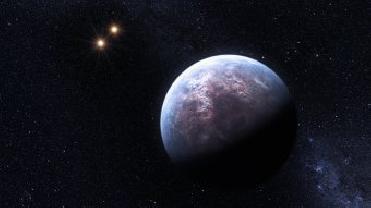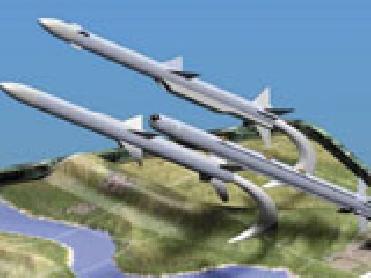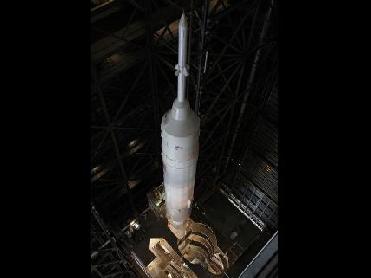
One of the exoplanets discovered by HARPS is surrounding a star - Gliese 667 C. The 6 Earth-mass exoplanet circulates around its low-mass host star at a distance equal to only 1/20th of the Earth-Sun distance. The host star is a companion to two other low-mass stars, which are seen here in the distance. Image credit: ESO
PARIS (BNS): A team of astronomers at the European Southern Observatory (ESO) has announced an incredible discovery of as many as 32 new exoplanets in the cosmos.
The discovery has been made by the High Accuracy Radial Velocity Planet Searcher (HARPS) � a spectrograph for ESO�s 3.6-metre telescope built at La Silla, Chile. Over the past five years, HARPS has spotted more than 75 of the roughly 400 or so exoplanets known so far in various planetary systems.
With the latest finding, the number of known low-mass planets has gone up by an impressive 30%, ESO said.
The astronomers disclosed their findings at an international conference in Porto, Portugal on Monday.
�HARPS is a unique, extremely high precision instrument that is ideal for discovering alien worlds. �We have now completed our initial five-year programme, which has succeeded well beyond our expectations,� said St�phane Udry, while making the announcement.
With the spectrograph�s amazing precision, the search for small planets, those with a mass of a few times that of the Earth � known as super-Earths and Neptune-like planets � has been given a dramatic boost. HARPS has facilitated the discovery of 24 of the 28 planets known with masses below 20 Earth masses.
As with the previously detected super-Earths, most of the new low-mass candidates reside in multi-planet systems, with up to five planets per system.
�These observations have given astronomers a great insight into the diversity of planetary systems and help us understand how they can form,� said team member Nuno Santos.
The HARPS consortium was very careful in their selection of targets, with several sub-programmes aimed at looking for planets around solar-like stars, low-mass dwarf stars, or stars with a lower metal content than the Sun. The number of exoplanets known around low-mass stars � so-called M dwarfs � has also dramatically increased, including a handful of super Earths and a few giant planets challenging planetary formation theory.
�By targeting M dwarfs and harnessing the precision of HARPS we have been able to search for exoplanets in the mass and temperature regime of super-Earths, some even close to or inside the habitable zone around the star,� said co-author Xavier Bonfils.
The team found three candidate exoplanets around stars that are metal-deficient. Such stars are thought to be less favourable for the formation of planets, which form in the metal-rich disc around the young star. However, planets up to several Jupiter masses have been found orbiting metal-deficient stars, setting an important constraint for planet formation models.
 Previous Article
Previous Article Next Article
Next Article












The Indian Air Force, in its flight trials evaluation report submitted before the Defence Ministry l..
view articleAn insight into the Medium Multi-Role Combat Aircraft competition...
view articleSky enthusiasts can now spot the International Space Station (ISS) commanded by Indian-American astr..
view article